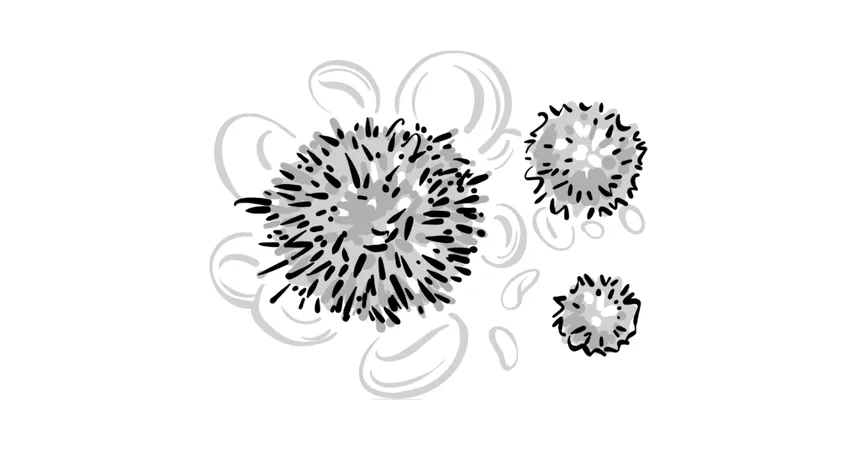
From Pain to Power: Stuntman’s Incredible Journey to Overcome a Mysterious Illness
2025-01-18
Author: Siti
Introduction
In 2015, Ray Kohn, a talented stunt driver and mechanic, began experiencing nagging pain in his knees and elbows. Initially dismissing it as a consequence of his physically demanding career, Kohn soon noticed alarming and unusual changes in his body. His head expanded to the point that he required a larger helmet, and his hands grew so large that he had to resize his wedding ring three times. His voice deepened, and discomfort escalated as he gained over 100 pounds despite his active lifestyle. Surprisingly, he felt a constant, unquenchable hunger, leading him to suspect something was seriously wrong.
The Search for Answers
As the years passed and pain persisted, Kohn underwent three knee surgeries and other medical consultations, yet no doctor could provide answers. “I was falling apart, and I didn’t know why,” reflected Kohn, who is now 47. Footage of his past stunts revealed just how drastically his body had transformed, leaving him contemplating, “Why is this happening?”
A Pivotal Moment
A pivotal moment came in the fall of 2022 when Kohn visited a dermatologist regarding new lines on his forehead. The dermatologist, noticing the size of Kohn's hands and inspecting various features, ordered blood tests that revealed alarmingly high hormone levels. This crucial step led him to Dr. Divya Yogi-Morren at the Cleveland Clinic, an endocrinologist specializing in pituitary diseases.
Diagnosis of Acromegaly
Upon their first meeting, Dr. Yogi-Morren immediately recognized the signs of a rare condition known as acromegaly—a disorder characterized by overproduction of human growth hormone, often due to a benign tumor on the pituitary gland. The implications of unchecked acromegaly include severe cardiac issues and, notoriously, the condition once afflicted wrestling legend Andre the Giant.
"They said, ‘If you don't get this out of your brain, you're going to die,’" Kohn recalled, but even amidst the dire news, he couldn’t help but ask, “Can I still stunt-jump after this surgery?”
Understanding Acromegaly and Its Treatments
Acromegaly manifests itself in adults through excessive growth hormone, leading to an array of symptoms. Characteristic changes include large extremities, facial alterations, and various systemic health issues. Dr. Alice Levine, an endocrinologist who studies the condition, describes how excess growth hormone can lead to elevated levels of IGF-1, disrupting metabolism and growth regulation.
Kohn's MRI revealed a nine-millimeter tumor on his pituitary gland, mirroring the size of the gland itself. This cancerous growth triggered a series of alarming symptoms affecting nearly every part of his body. Medical professionals highlighted the long diagnostic delay typical of acromegaly, stating it often takes 6 to 10 years for patients to receive the correct diagnosis, largely due to the condition's diverse manifestations.
Treating acromegaly involves surgical removal of the tumor, which often successfully ceases excess hormone production. If surgery fails, radiation therapy or medication may be alternative paths. While immediate changes in soft tissue can reverse, lasting skeletal changes often necessitate corrective surgeries.
Facing Surgery
Kohn faced the prospect of brain surgery with trepidation, a stark contrast to the risks he regularly took in his stunt work. Once he underwent an eight-hour procedure in June 2023, he emerged on the other side relieved and hopeful.
Life-Changing Recovery
The recovery process was undoubtedly challenging, but Kohn has experienced a dramatic improvement in his quality of life, losing over 100 pounds within a year after the surgery. Follow-up appointments have been promising, indicating the treatment is working. He is now gearing up for further surgical procedures to repair his knees and jaw, which were also affected by the acromegaly.
Grateful for the dermatologist’s role in his diagnosis, Kohn shared, “I felt reborn,” as he resumed performing stunt jumps he feared would become impossible due to his untreated condition. The thrill of getting back into the stunt car was exhilarating for him—“It was very special,” he recalled.
Conclusion
Kohn’s story serves as a reminder of the importance of seeking answers for persistent health issues. His journey from pain to empowerment demonstrates resilience amidst adversity, making him an inspiration for those battling their own health challenges.


 Brasil (PT)
Brasil (PT)
 Canada (EN)
Canada (EN)
 Chile (ES)
Chile (ES)
 Česko (CS)
Česko (CS)
 대한민국 (KO)
대한민국 (KO)
 España (ES)
España (ES)
 France (FR)
France (FR)
 Hong Kong (EN)
Hong Kong (EN)
 Italia (IT)
Italia (IT)
 日本 (JA)
日本 (JA)
 Magyarország (HU)
Magyarország (HU)
 Norge (NO)
Norge (NO)
 Polska (PL)
Polska (PL)
 Schweiz (DE)
Schweiz (DE)
 Singapore (EN)
Singapore (EN)
 Sverige (SV)
Sverige (SV)
 Suomi (FI)
Suomi (FI)
 Türkiye (TR)
Türkiye (TR)
 الإمارات العربية المتحدة (AR)
الإمارات العربية المتحدة (AR)